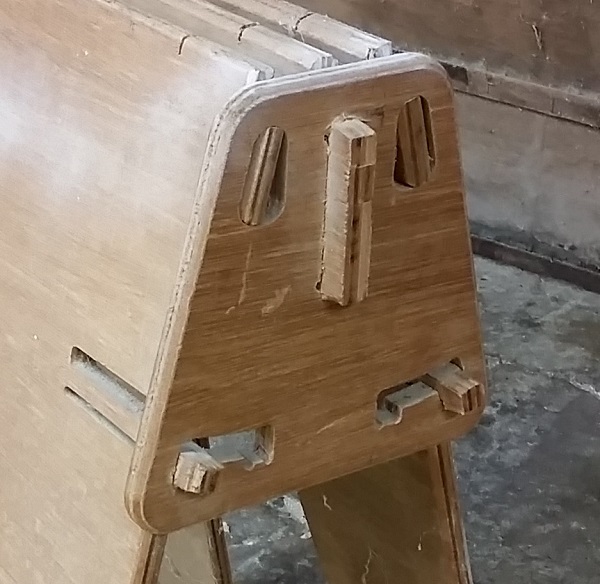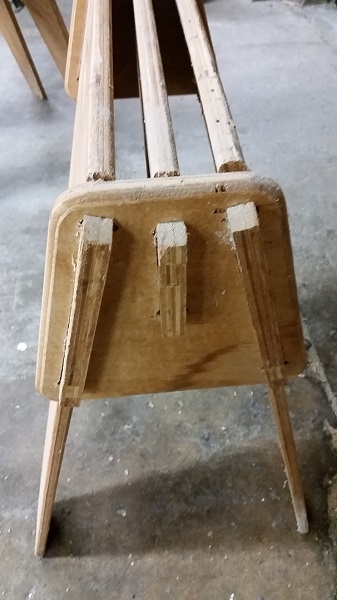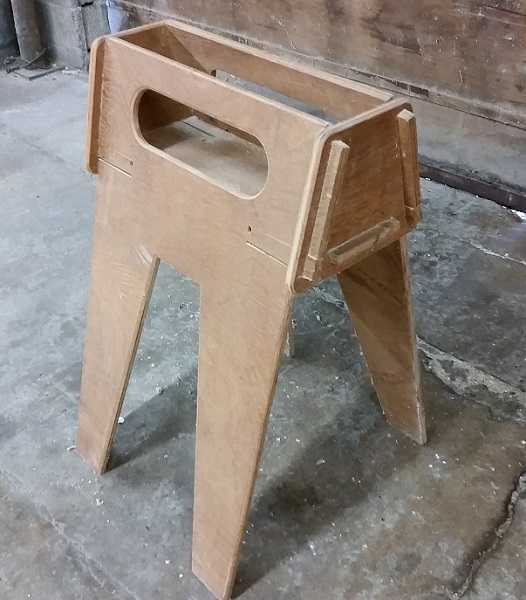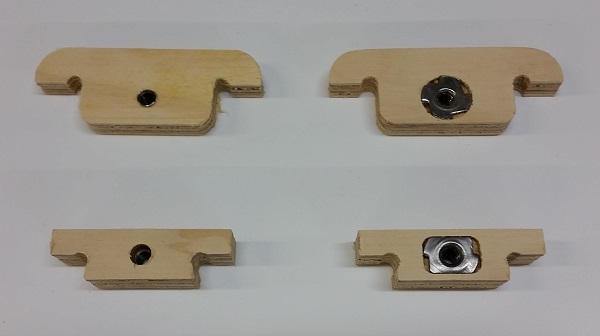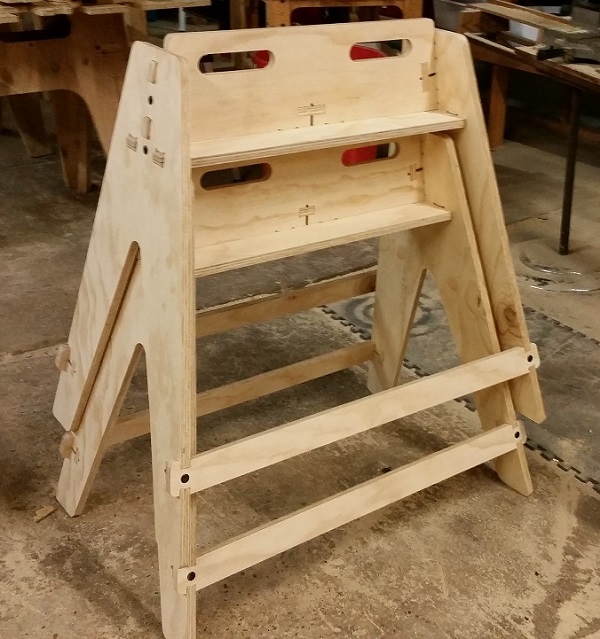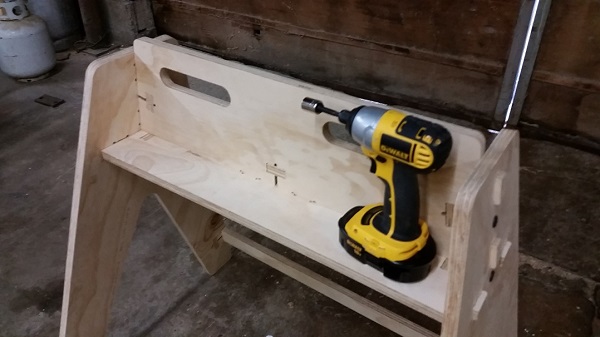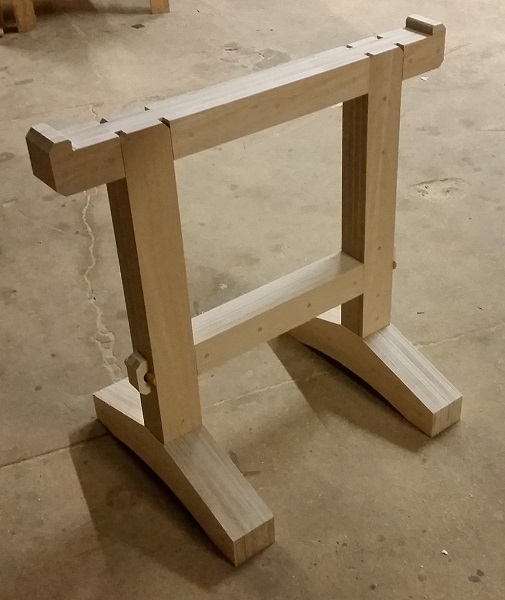Years ago I read an interview with the guy at Hinkley Yachts that does their varnishing. Hinkley is known for their beautiful finishes and he described their process: brush on a coat of varnish and wait for it to dry. Then sand with fine sandpaper to prepare for the next coat. Repeat over and over again to build up a beautiful and durable finish. The interviewer finally asked him when he knew he had applied enough coats and the job was finished. He replied that he was never finished…eventually someone just took it away!
Anyone that works in a shop knows that you can never have enough sawhorses, and everyone has their favorite style and design. For years I banged them together from 2×6’s and plywood scrap, but they were heavy and kind of a pain to build. So one of my first ShopBot projects (almost 20 years ago now!) was to try to improve on the sawhorses that I’d been building.
There are very few rules for sawhorses. They have to be stable and strong, but that still leaves a lot of design flexibility. I hoped to get a pair of sawhorses out of a single sheet of plywood, and had found that sawhorses much more than 24″ wide were pretty awkward to deal with in a small shop. I wanted to be able to share the design so that any ShopBot owner would be able to make some, which meant they needed to be cut with a single bit and no flips. Most importantly they had to be stupidly strong — having flimsy sawhorses is worse than having no sawhorses at all! So 3/4″ plywood was my material of choice. I knew I wouldn’t have a final version that I would be completely satisfied with on my first try, but I needed something functional. Little did I know how long I would be designing sawhorse variations!
My first version used a “snaploc” joint that I had been experimenting with in a couple of projects, that used the natural springiness of plywood to create a flexible hook to hold parts together. Since I had a fancy new ShopBot I thought everything I designed needed to be clever, so I decided that my sawhorses should fold and use the snaploc joint as a catch.
A great idea in theory, but in practice it proved to be more clever than practical. The hooks were weak when they were un-supported like that and tended to break, and I really never felt the need to fold them. So much for V.01! My next version was basically the same shape but without the folding capability/liability, they stacked nicely. It used the same snaploc joint and worked fine as a sawhorse–they were really strong–but it seemed like the material could be used a little more efficiently.
A few modified parts, a couple of rotated pieces, and a sawhorse with a built-in storage compartment was created. I liked it enough to make the files available for download, and a lot of them have been made over the 15 years or so that they’ve been available. (They were originally shared on floppy disks!)
I’ve probably made 20-30 sets of them and they have been my go-to sawhorse for 15+ years, but a couple of things have bothered me. Although the storage compartment is handy for holding tools while you’re working, it’s also an awesome place to lose tools, especially small things like pencils and rulers. And sometimes if there was a void in the plywood in a key spot in the snaps, the hooks could break when you were putting them together. Finally they were also a little sensitive to variations in plywood thickness (and you know how I feel about that!!)
In the last couple of years, my collaborator Robert Bridges and I have been working on a fastening system for our Shelter 2.0 project that we refer to as “telephone connectors” that we use to make designs material-agnostic—not dependent on precisely sizing and modifying designs to compensate for thickness variations.
A couple of months ago I decided it was time for one more sawhorse redesign. I wanted to:
- Use telephone connectors to make them work better with varying materials.
- Retain the ability to store tools and supplies, but eliminate the enclosed “hiding place.”
- Create a design that can easily use slab doors to convert into work tables.
- Cut efficiently out of one sheet of plywood.
This most recent version is my favorite one so far. They are incredibly strong but can be quickly disassembled to pack flat for shipping to shows and events. They are light and stack to minimize floorspace, and with the addition of two slab doors, quickly convert into a pop-up table or workbench.
Software developers have a saying, “Release early, release often” which is a great philosophy to follow. There are always improvements to be made in any design, but that doesn’t mean that your design isn’t useful in its current state.
Release it when it’s “good enough” but keep experimenting with new ways to make it better!

